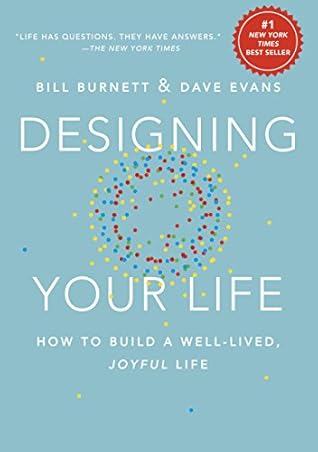More on this book
Community
Kindle Notes & Highlights
by
Bill Burnett
Read between
August 8, 2018 - February 8, 2021
True happiness comes from designing a life that works for you.
How do I find a job that I like or maybe even love? • How do I build a career that will make me a good living? • How do I balance my career with my family? • How can I make a difference in the world? • How can I be thin, sexy, and fabulously rich?
“Don’t start with the problem, start with the people, start with empathy.”
lot. The biggest reframe is that your life can’t be perfectly planned, that there isn’t just one solution to your life, and that that’s a good thing.
into. Your life is not a thing, it’s an experience; the fun comes from designing and enjoying the experience.
It’s not static. It’s not about some destination. It’s not about answering the question once and for all and then it’s all done. Nobody really knows what he or she wants to be. Even those who checked a box for doctor, lawyer, or engineer. These are just vague directions on a life path.
You can imagine a career and a life that don’t exist; you can build that future you, and as a result your life will change. If your life is pretty perfect as is, life design can still help you make it an even better version of the life you currently love living.
In fact, we suggest you go out and get a design team right off the bat—a group of people who will read the book with you and do the exercises alongside you, a collaborative team in which you support one another in your pursuit of a well-designed life. We’ll
Designers don’t think their way forward. Designers build their way forward.
It means you are not just going to be dreaming up a lot of fun fantasies that have no relationship to the real world—or the real you. You are going to build things (we call them prototypes), try stuff, and have a lot of fun in the process.
are curiosity, bias to action, reframing, awareness, and radical collaboration.
Designers embrace change. They are not attached to a particular outcome, because they are always focused on what will happen next—not what the final result will be.
We hate this idea for one very good reason: most people don’t know their passion.
And the research shows that, for most people, passion comes after they try something, discover they like it, and develop mastery—not before. To put it more succinctly: passion is the result of a good life design, not the cause.
Once you know how to prototype your way forward, you are on the path to discovering the things you truly love, passion or not.
of adventures, of failures that taught you important lessons, of hardships that made you stronger and helped you know yourself better, and of achievements and satisfactions.
You start to hear of job openings you were dreaming about. People you were interested in meeting just happen to be in town. What is happening here? For starters, it’s that “getting good at being lucky”
Problem Finding + Problem Solving = Well-Designed Life
These are all gravity problems—meaning they are not real problems. Why? Because in life design, if it’s not actionable, it’s not a problem. Let’s repeat that. If it’s not actionable, it’s not a problem. It’s a situation, a circumstance, a fact of life. It may be a drag (so to speak), but, like gravity, it’s not a problem that can be solved.
health, work, play, and love.
When an activity is done to win, to advance, to achieve—even if it’s “fun” to do so—it’s not play.


